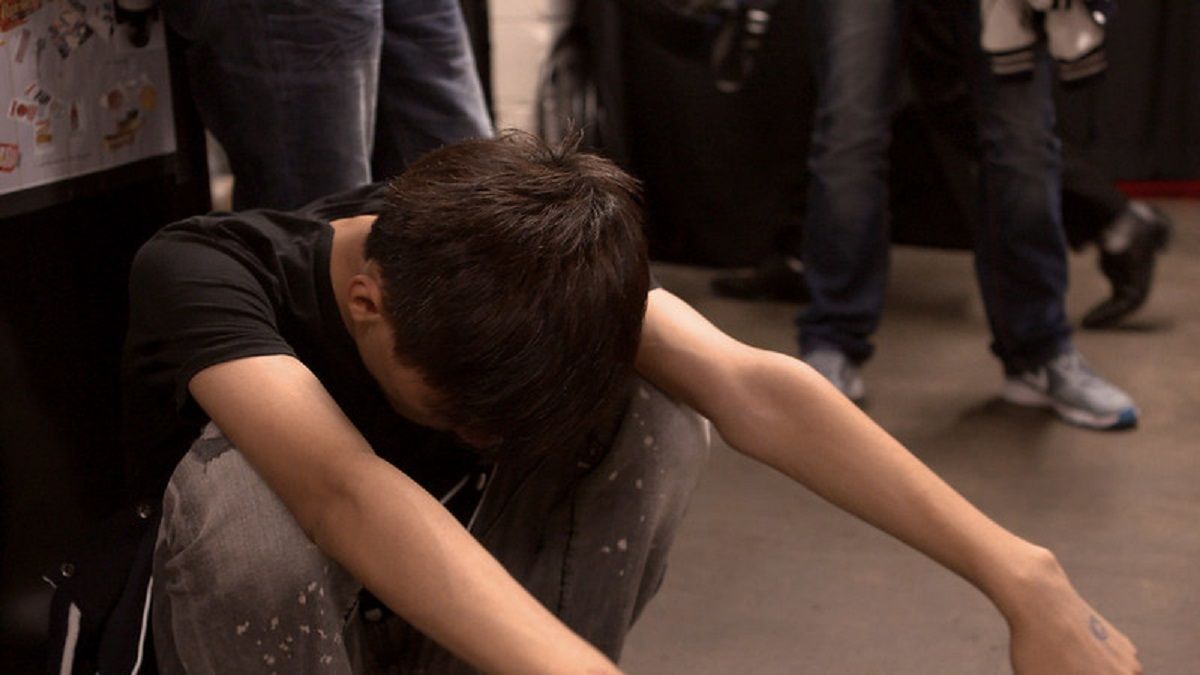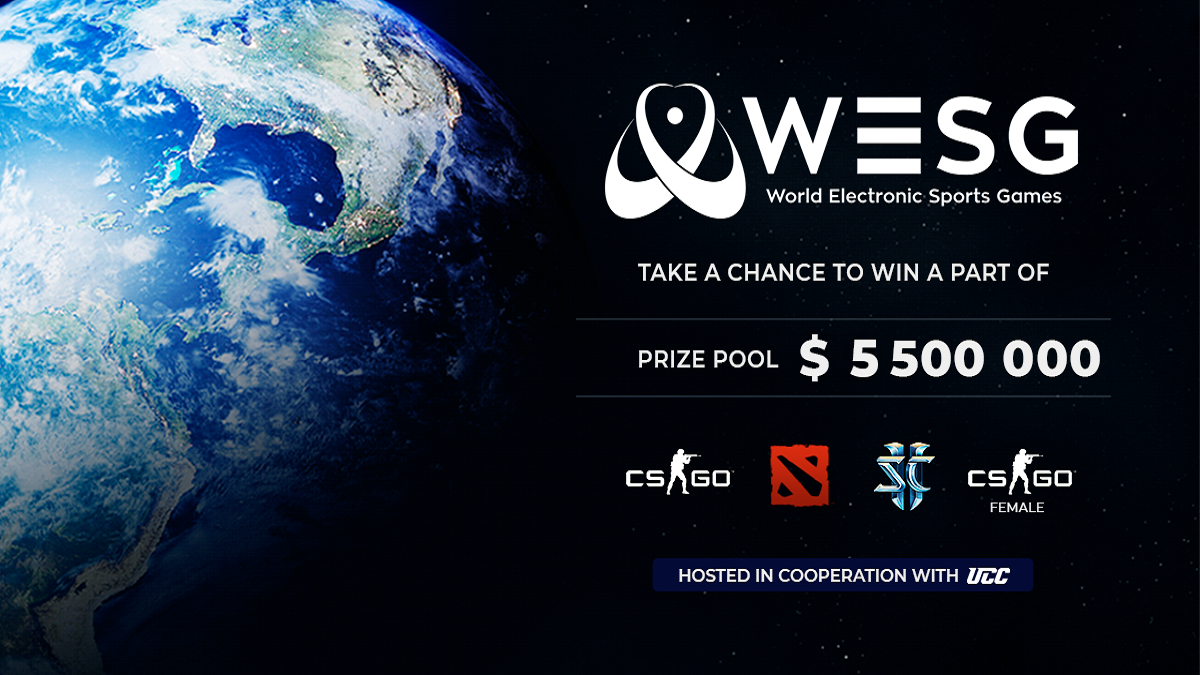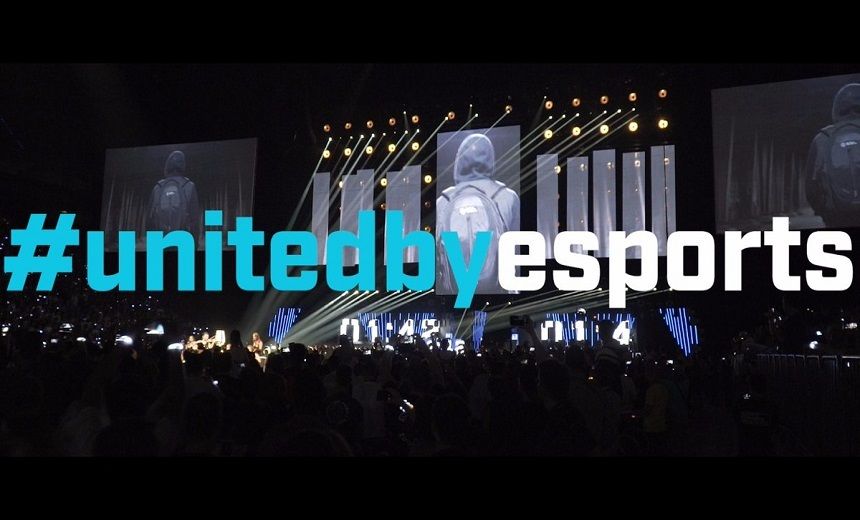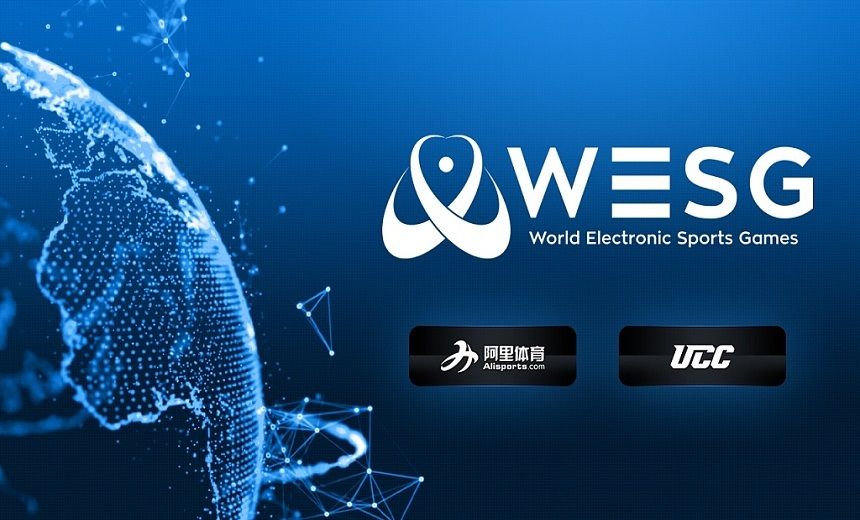WCS has not had it easy. Not long after event’s announcement on April 3rd this year the bombardment of negativity began. In order to step up from the 2012 edition of the league and its “grassroots competition” concept, Blizzard decided to mimic Riot’s approach: they segregated the scene into regions in order to create unified and better structured global StarCraft 2 competition. In this attempt, however, Blizzard bit off more that they could chew.
Despite the five-month period between 2012’s finals and the announcement of the 2013 season, the end result felt rushed for such a major restructuring. Members of the media and renowned SC2 figures readily pointed out the flaws. Criticized were the WCS America qualifier, the shrinking of the Korean scene in terms of yearly tournaments held and, later, the lack of format unification and the overlap with other important events.
One particular feature of the new WCS system, however, endured more negativity than anything else, namely the lack of any region locking whatsoever. Unlike its LCS counterpart where teams stay and compete exclusively in their local region, WCS allowed players to register for any circuit regardless of residency, provided they stayed with it for the entirety of the 2013 season.
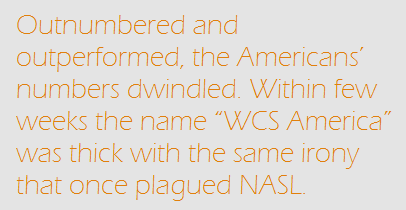 Faced with the opportunity to avoid the Code S bottleneck, the Koreans split up between circuits in order to have an easier time. Some of them decided to compete in WCS Europe but the majority chose the weaker region: WCS America.
Faced with the opportunity to avoid the Code S bottleneck, the Koreans split up between circuits in order to have an easier time. Some of them decided to compete in WCS Europe but the majority chose the weaker region: WCS America.
Outnumbered and outperformed, the Americans’ numbers dwindled. Within few weeks the name “WCS America” was thick with the same irony that once plagued NASL. The situation was no better than the post 2011 Columbus MLG era where HuK and Idra were the only representatives of their continents able to oppose the Koreans and make it past the top eight cut off. Irritated by the way WCS America was panning out, the fans who wanted true regional competition stopped asking whether region locking was justified and instead wanted to know when the measure would be implemented.
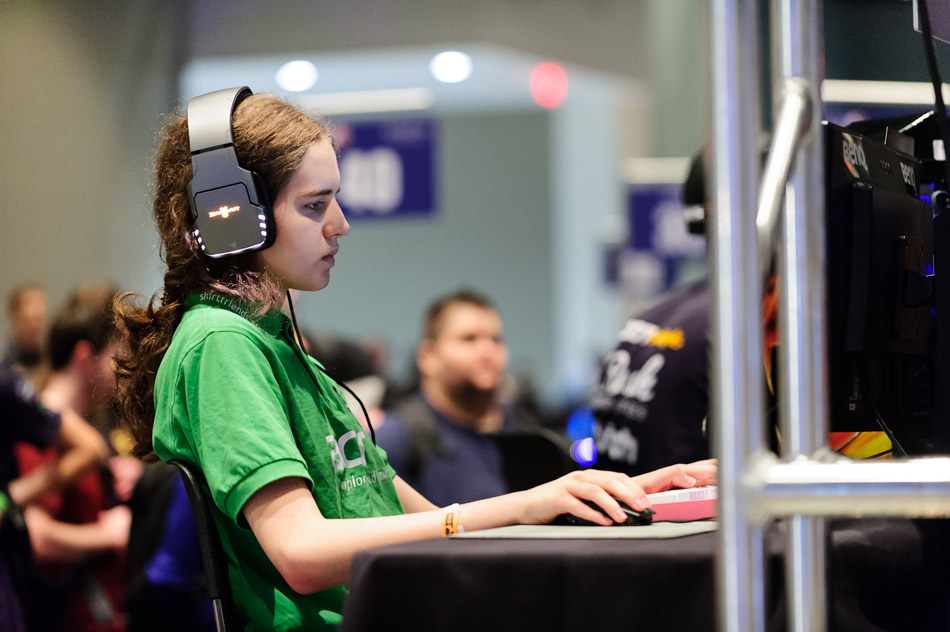
In all of the three seasons, Scarlett was the only North American to make her league's playoffs.
Photo: Kevin Chang for Team Liquid
The first hint that region locking might indeed be featured in 2014 came with the retirement of Choi “Shuttle” Sung Jin, a Terran player who spent his last progaming days with Clarity Gaming. According to a post on Millenium.org, Shuttle retired because region locking would have forced him to compete WCS Korea rather than WCS Europe. For a player who never made it past the Ro32 of Europe’s premier, returning to the pitiless world of the Korean scene would mean elimination, followed by obscurity. In a reddit post about the case, the article’s author Nicolas “Barny” Vergne came to say that this is, in fact, his information. That, combined with the hints about the 2014 WCS restructuring, was enough to breathe new life in the topic.
Blizzard eventually released a Q&A about the future of WCS where they acknowledged that the lack of region locking whatsoever is a problem. Although there were no changes set in stone, Blizzard eSports manager Kim Phan did state that a handful of ideas were being considered, namely the incorporation of the ladder, pushing for more offline WCS playdays and setting aside dedicated seeds for players living in the region in question.
"We are aware of the concern that allowing skilled players from other regions to easily swoop in and take Premier/Challenger spots can be a severe roadblock to the growth of up-and-coming talent within a local region. With that in mind, we are definitely considering various forms of residency restrictions, but the biggest obstacles include determining the specific requirements, logistics, and regulations that are fair but also don’t overly limit players. Some general ideas we have been considering include carving out a portion of player slots dedicated to legal residents that would guarantee players living in a particular region would always have a consistent chance to make it into Challenger League. Also, we are pushing for more of our broadcast content to happen in a physical studio environment, inevitably pushing players to commit to longer periods of time where they must reside locally. Other points of interest we feel relevant to this include encouraging pros to play on their prospective regional ladders and requiring that anyone who wants to qualify in a region be ranked at a certain level on that region’s server. We have even been considering rewarding WCS points to players on the ladder who have registered with us as official WCS players."
In that same post, Blizzard’s goals for WCS 2014 are to be announced before BlizzCon (November 8-9) because the company wants to hear the community’s suggestions. Given the situation, it’s more likely than not region locking to be the main issue.
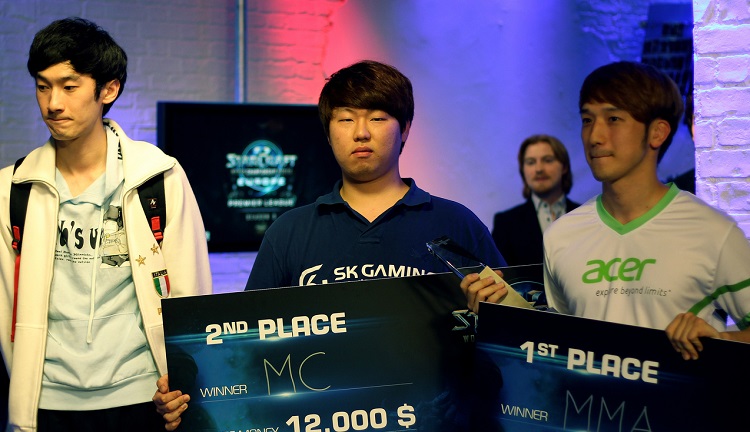
Kaelaris' presence in the back indicates that this is, after all, WCS Europe. Photo: ESL
Personally, I have to say that the idea of allowing Korean “infestation” all over the circuit was originally unpleasant to me. Both in the early and the later days of the competition, I shared most of the concerns and often conversed with coworkers about how the stories of foreigners winning a championship were going extinct. While in 2012 the West got its hands on a few major trophies, one such achievement is still lacking in 2013. What’s more, the chance of WCS getting an all-Korean World Finals is very real now that Scarlett was eliminated and with Naniwa dangerously close to being edged out by the end of the Season 3 finals. From my perspective, region locking was necessary and I readily disregarded the harm a decision such as this could bring.
Now, just days away from learning Blizzard’s final plans for 2014, those harmful effects ought to be pointed out.
Firstly, Shuttle’s retirement won’t be the last should a hard region lock be implemented. While richer teams might be able to afford moving their players West, everyone else will be contained inside South Korea. Even though the level of competition in the non-Korean circuits is still extremely high, there’s no denying that players are having a harder time in Korea’s Premier so smaller teams and lower tier players will suffer.
 The bigger names won’t be unaffected either. With KeSPA having fully switched to StarCraft 2, the talent pool in Korea is larger than ever. This means you either do well in Premier League or go down to Challenger and risk never appearing on the big stage again. If you think there’s an exaggeration to this, consider the most recent WCS Korea Challenger bracket which sent players like Symbol, Curious, Squirtle, Sniper and YongHwa out of the league altogether. Coupled with the reduced number of Korean tournaments, this will lead to even more retirement. StarCraft 2 is a dog eat dog world but “the weak are meat and the strong do eat” is not the way to a prosperous scene.
The bigger names won’t be unaffected either. With KeSPA having fully switched to StarCraft 2, the talent pool in Korea is larger than ever. This means you either do well in Premier League or go down to Challenger and risk never appearing on the big stage again. If you think there’s an exaggeration to this, consider the most recent WCS Korea Challenger bracket which sent players like Symbol, Curious, Squirtle, Sniper and YongHwa out of the league altogether. Coupled with the reduced number of Korean tournaments, this will lead to even more retirement. StarCraft 2 is a dog eat dog world but “the weak are meat and the strong do eat” is not the way to a prosperous scene.
Secondly, people tend to forget that the Koreans winning all the prize money are only one part of the players flocking from regions outside Europe or America. Throughout its course, WCS also saw participation from Australians and South East Asians. Competing in WCS America was among the few chances of getting their games televised.
Same was the case with the Chinese who, in order to compete in WCS America, had to survive the long and painful visa appointments as well as the embarrassingly mismanaged Season 1 qualifiers to make it to Season 2 premier. Lacking an active scene of their own, they needed the WCS exposure badly and went through tremendous trouble to get it. To give them a taste of the action and then chase them out is like the fellatio that precedes the kick in the balls.
Thirdly, the entertainment level in WCS America will likely drop. Although labeling the NA scene as dead is an exaggeration - there are many players still banking talent in this region still - there just isn’t a large enough player pool to fill 60+ WCS spots across Premier and Challenger league. The majority of the competitors west of the Atlantic are very much unknown to the wider public, and if there are no stories that can get viewers excited, only a few will tune in to watch you play.
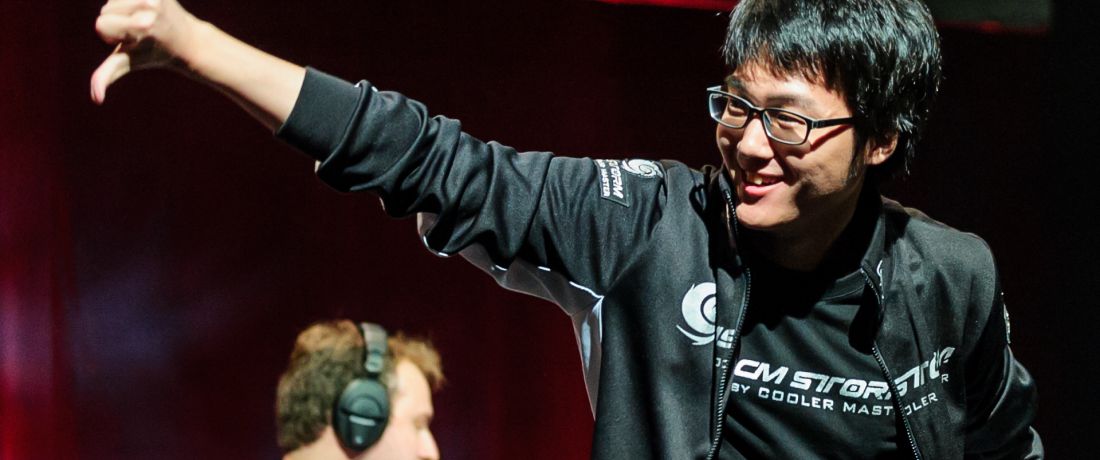
Despite his Korean origin, Polt and his back-to-back WCS America championships have become one of league's most celebrated stories. Photo: Kevin Chang for Team Liquid
So what should the solution look like? Neither a hard region lock based on residency will work, nor will making the entire WCS competition offline. The latter might even bring about early retirement for players who can’t afford to travel. Reducing the slots for non-residents is another popular idea, but this would mean more qualifiers, more scheduling issues, more logistic problems and, ultimately, a season that’s harder to follow.
Finding a way to implement the StarCraft 2 ladder is a good starting point. Being the most organic competitive stimulant within the game, to see it not used for tournament purposes is, frankly put, foolish. It is an easy way to extend a hand to those competitors who are not part of a major team but have achieved something due to their dedication to the game. There are a number of ways the ladder can be tied with WCS – from making players commit to it if they want to compete in a certain region to giving top-ranked players seeds into Premier or Challenger – and there is no reason it shouldn’t be done. It’s already three years too late anyway.
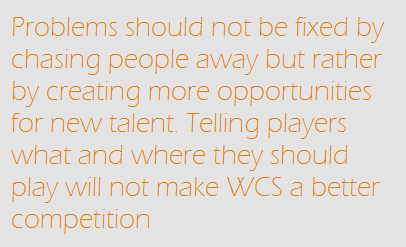 Working with as many non-WCS tournaments as possible is also essential. For 2013, there were just eight tournaments outside WCS that provided league points, a shamefully low number. Giving players more opportunities to climb the standings will help fight circuit stagnation and will tie the scene more instead of having WCS alone by itself.
Working with as many non-WCS tournaments as possible is also essential. For 2013, there were just eight tournaments outside WCS that provided league points, a shamefully low number. Giving players more opportunities to climb the standings will help fight circuit stagnation and will tie the scene more instead of having WCS alone by itself.
That said, the problems should not be fixed by chasing people away but rather by creating more opportunities for new talent. Telling players what and where they should play in order to re-arrange the scene into some arbitrary shape will not make WCS a better competition. Although some adjustments are needed, in the end the competitors should be allowed freedom in competition and it is Blizzard’s responsibility to create an adequate system that can provide said freedom. The dwindling of the non-Korean scene is certainly an issue - despite the David Mitchell reference from earlier - and making sure it is preserved is a topic deserving an article of its own. As far as this writer is concerned, though, addressing WCS only and taking harsh measures like imposing a strict region lock can backfire more than it will help.

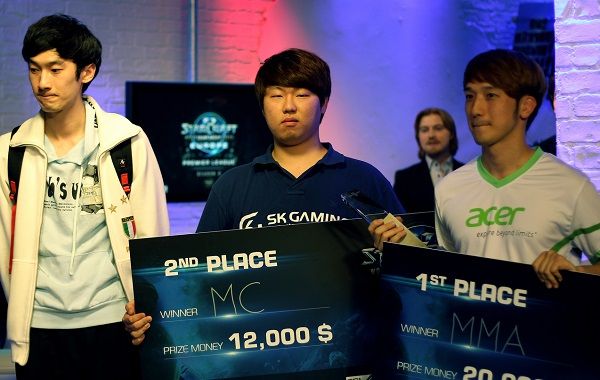
![[Op-Ed] Women in competitive gaming – why are there so few?](https://static.gosugamers.net/8f/c9/2c/df69cf93db41c27a46978529e01614f38e0bfb80888132ac95fd3f89fb.jpg?w=1600)
